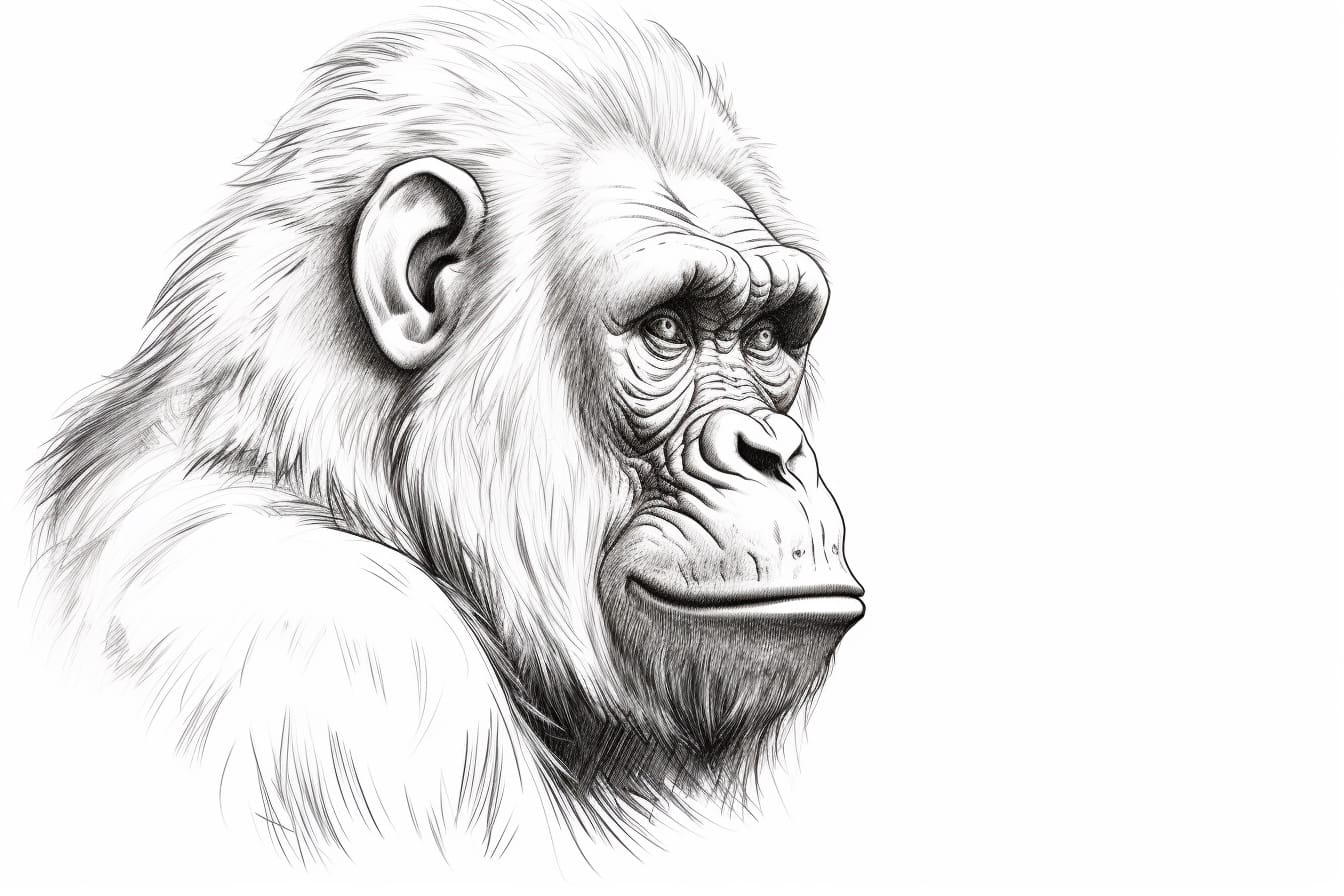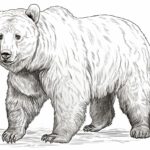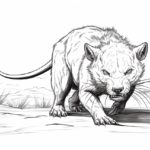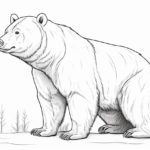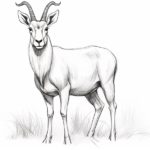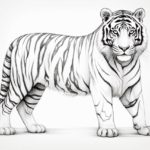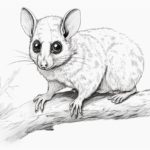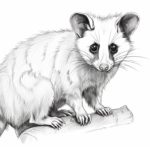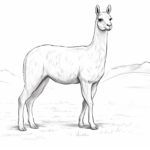Drawing an Ape can be a fascinating and rewarding experience for any artist, whether you are a beginner or an experienced illustrator. These intelligent and charismatic creatures possess unique features and expressions that make them a captivating subject to study and depict on paper. By observing their anatomy, facial expressions, and movements, you can develop your drawing skills and create striking and lifelike portraits of these incredible animals. In this guide, we will explore the key steps and techniques to help you capture the essence of an Ape in your artwork, from understanding their proportions to adding details that bring your drawing to life. Get ready to unleash your creativity and embark on an artistic journey into the captivating world of drawing Ape!
Materials Required
To draw an ape, you will need the following materials:
- Drawing paper or sketchbook
- Pencils (various grades for shading and detailing)
- Eraser (preferably a kneaded eraser for easy corrections)
- Sharpener
- Drawing pen or fine liner (optional for outlining)
- Reference image or model of an ape for inspiration and accuracy
These basic materials should be sufficient for creating a drawing of an ape. Feel free to add any additional materials you prefer to use in your artwork.
How to Draw an Ape: a Step-by-step Guide
Step 1: Gather Your Materials
- Gather all the necessary materials for drawing, including paper, pencil, eraser, and any coloring tools you may want to use.
Step 2: Start with Basic Shapes
- Begin by lightly sketching the basic shapes of the ape’s body to establish proportions. Use circles for the head and torso, and ovals for the limbs.
Step 3: Define the Head and Face
- Refine the shape of the head by adding details such as the muzzle, eyes, nose, and ears. Pay attention to the placement and size of these features to capture the likeness of an ape.
Step 4: Outline the Body
- Draw the arms and legs, making sure to show the ape’s strength and muscular build. Add in the hands and feet, paying attention to the shape and size of the fingers and toes.
Step 5: Add Fur Texture
- To give your ape a realistic look, sketch in the fur texture using short, quick strokes. Pay attention to the direction of the fur growth to create a natural appearance.
Step 6: Refine Details
- Add in any additional details such as facial expressions, wrinkles, or scars to give your ape character and depth.
Step 7: Erase Guidelines
- Carefully erase any remaining guidelines and unnecessary lines to clean up your drawing and make it ready for coloring.
Step 8: Add Color (Optional)
- If you choose to color your drawing, select appropriate colors for the ape’s fur, skin, and eyes. Use shading techniques to add dimension and depth to your artwork.
Step 9: Final Touches
- Take a step back and assess your drawing. Make any final adjustments or additions to enhance the overall look of your ape drawing.
Step 10: Sign and Date
- Sign your artwork and date it to mark your completion of the ape drawing. Display your finished piece proudly or share it with others to showcase your artistic talent.
Conclusion
In conclusion, drawing an ape requires careful observation of their unique features and anatomy. By studying their proportions, facial expressions, and distinctive characteristics, you can create a realistic and engaging representation of these fascinating creatures. Remember to practice regularly, experiment with different techniques, and embrace the challenge of capturing the essence of apes in your artwork. With patience and dedication, you can develop your skills and create impressive ape drawings that truly showcase your artistic talent.
Fun Facts About Apes
- Apes are some of our closest living relatives, sharing a common ancestor with humans about 5 to 10 million years ago.
- There are two main types of apes: lesser apes (gibbons and siamangs) and great apes (orangutans, gorillas, chimpanzees, and bonobos).
- Apes are highly intelligent animals, capable of problem-solving, tool use, and even some forms of communication.
- Chimpanzees are known to use tools in the wild, such as sticks to extract insects from tree bark or stones to crack open nuts.
- Orangutans are the largest tree-dwelling animals in the world and are known for their distinctive long, shaggy red hair.
- Gorillas live in close-knit family groups led by a dominant male known as a silverback.
- Bonobos are known for their peaceful and egalitarian social structure, using sex as a means of conflict resolution and bonding.
- Gibbons are famous for their acrobatic abilities and loud, melodious calls that can be heard across the forest canopy.
- Apes have opposable thumbs and are capable of complex hand movements, which help them grasp and manipulate objects in their environment.
- Conservation efforts are crucial to protecting apes, as many species are threatened by habitat loss, poaching, and diseases such as Ebola.
Suggestions for Scenes and Settings for Ape Drawings
Of course! Here are some unique and creative scene suggestions for drawings featuring apes:
- A lush jungle setting with a family of apes swinging through the trees, showcasing their agility and strength.
- An ape tribe gathering around a bonfire at night, with the stars shining brightly in the sky above.
- An ape artist sitting by a tranquil river, sketching the surrounding nature with a stick in the sand.
- An ape scientist conducting experiments in a high-tech laboratory filled with advanced equipment and gadgets.
- An ape explorer bravely venturing into a mysterious cave filled with glowing crystals and ancient artifacts.
- An ape musician performing a soulful melody on a handmade instrument under the light of a full moon.
- An ape warrior leading a charge against a rival tribe, wielding a formidable weapon made from natural materials.
- An ape chef cooking up a delicious feast in a bustling kitchen filled with colorful ingredients and aromatic spices.
- An ape fashion designer showcasing their latest creations on a runway in the heart of the jungle, with other animals as the audience.
- An ape yoga instructor guiding a group of animals through a peaceful and rejuvenating practice in a serene forest clearing.
I hope these suggestions inspire you to create some truly captivating and imaginative ape drawings!

